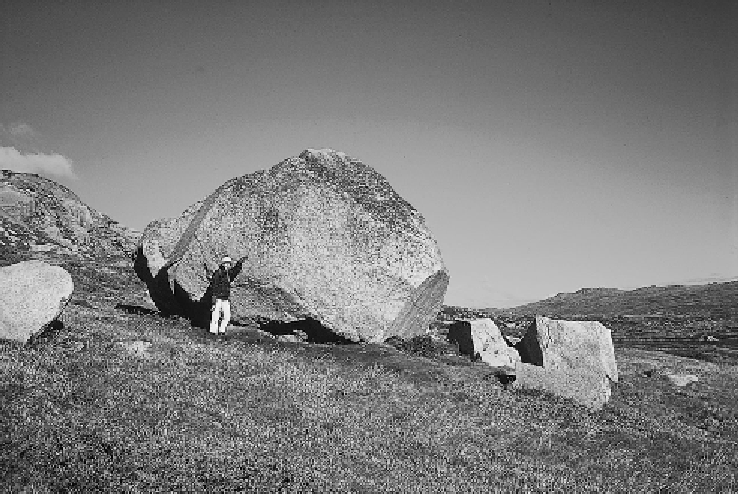Geoscience Reference
In-Depth Information
Figure 13.4. Erratic boulder transported by ice, Snowy Mountains, Australia.
down to form ground moraine or glacial till. The melting of blocks of ice within the
glacial till leads to an irregular surface topography, with the resultant deposits often
termed hummocky moraine. Small lakes may form within hollows on the surface of
the hummocky moraine. As the ice begins to retreat, the resulting meltwater streams
will carry and deposit fluvial sediments across the glacial outwash plains. Small lakes
are common at the snout of receding glaciers and also become filled with sediment.
Dust blown from the glacial outwash plains and deposited downwind is well-known
as glacial loess, discussed in
Chapter 9
.
13.4 Evidence of periglacial processes
On the margins of the high latitude Quaternary ice sheets, such as the Laurentide and
Cordilleran ice sheets of North America or the Scandinavian ice sheet of north-western
Europe, there was a zone of permanently frozen ground, or permafrost, great swathes
of which are still present in Alaska and Siberia as relicts from the last ice age. Along
the temperate margins of the permafrost zone and in low latitude mountains, there was
(and is) no permafrost. In its stead, there is a zone of periglacial freeze-thaw activity
with its own suite of characteristic landforms (Troll,
1944
; Embleton and King,
1968
;
Davies,
1969
; Flint,
1971
; Washburn,
1973
; Washburn,
1979
). These include areas of

